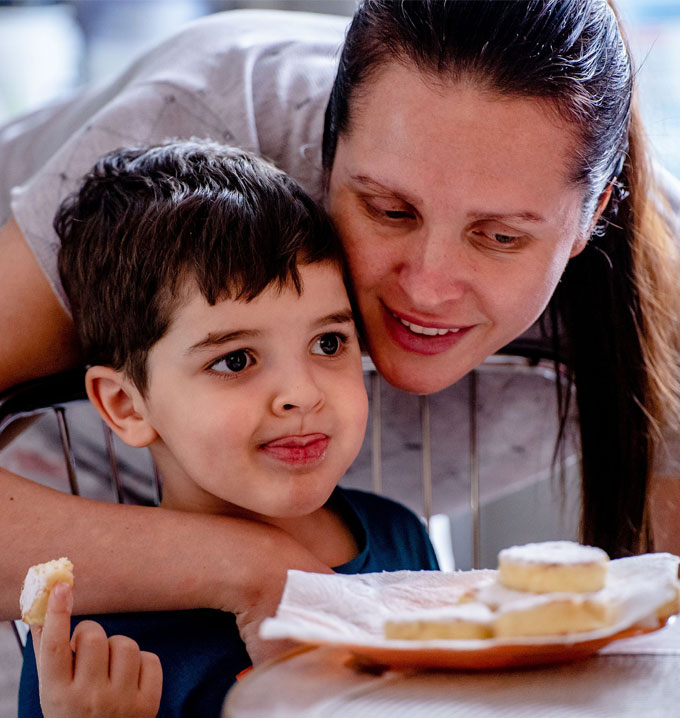Eating Out with a Child that Has Autism
Something as simple as eating out with your child with autism can often be a stressful and anxiety inducing time for a family and child. Children on the autism spectrum can become easily overstimulated by the sounds, lighting, smells, and just the overall chaotic environment and unfamiliarity that restaurants bring. Overstimulation can be very overwhelming and mentally draining. Below, we have outlined some helpful and useful tips for taking your child with autism out to eat.

How to Take Your Autistic Child to a Restaurant
- If possible, go at a quiet time of day. Think early dinners around 4:00 or 5:00 pm if your families schedule allows it. Consider a late afternoon lunch if you are going out on the weekends. Early dinners and late lunches tend to be less busy for restaurants and will provide a quieter and less stimulating environment for your child.
- Consider allowing the child to use earplugs to mask some of the more unsettling sounds such as people chewing food, high pitched squeals of other children, and the sound of cutlery scraping against plates or tables being bussed or if loud music is being played at the restaurant.
- Ask to not be seated next to the kitchen, bathrooms or main entrance to help minimize the number of people that are walking by your table. Additionally, if there are any large parties ask to be seated away from them.
- Sit in the corner; this will make it so that there are only two walls that are open to sound.
- If possible, ask for a booth instead of a table, this will help provide a more contained environment for your child.
- Ask your server to give you a heads up if there will be any singing for a birthday at a table close by so that you can take your child outside for a few moments while they sing.
- Should your child get overstimulated take your child outside and let him/her walk around for a few moments or go sit in the car so that they can calm down.
- Keep your child’s food simple. Ask in advance about mixed textures and if there is an option to request the item plain. Consider ordering a food item that your child is already familiar with and that you know they will enjoy.
- Take breaks if needed. Go to a quiet space or unoccupied bathroom or walk outside for a brief sensory break as needed.
- Try to keep your child occupied while at dinner. This can mean coloring, books, scent kit or fidget toys, playing with an iPad, bringing a favorite toy – whatever your child enjoys!
Together, we can unlock your child’s potential
Related News

03/07/2024
Symptoms of Asperger’s Syndrome – Lighthouse Autism Center
In this article, we take a look at Asperger’s syndrome, and describe its most common characteristics, how it differs from other autism disorders and how to treat it.

03/07/2024
ABA Therapy: Costs and Options – Lighthouse Autism Center
One of the most recognized treatments for autism is ABA therapy, but this comes with questions about costs and financial viability. Discover ABA therapy costs and explore the various options available to you, ensuring you’re equipped to make informed decisions for your family. Resources Available to Help Cover the Costs of ABA Therapy Services As […]

03/07/2024
Free Online Games for Autistic Kids – Lighthouse Autism Center
The virtual world can be a great resource for autism-friendly games, providing both a learning environment and an outlet for fun. Discover the benefits of online games for autistic children, and explore our top picks that cater to different needs and skills. Free Online Games for Autistic Kids The virtual world can be a great […]


